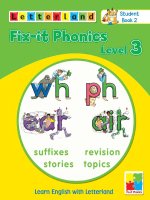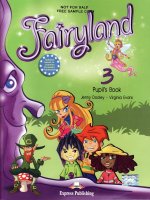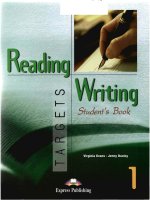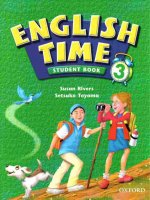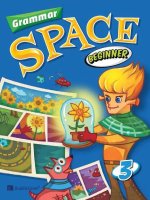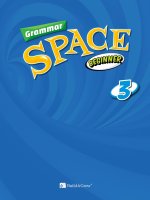Reading adventures 3 student book
Bạn đang xem bản rút gọn của tài liệu. Xem và tải ngay bản đầy đủ của tài liệu tại đây (37.58 MB, 128 trang )
Carmella Lieske s Scott Menking
NATIONAL
IN::
LEARNING
Australia
s Brazi
orea
s Mexico
* » CENGAGE
Learning:
» Singapore
s Spain
s United Kingdom
» United States
NATIONAL
GEOGRAPHIC
LEARNING
£ „ CENGAGE
š
**
Learning:
Reading Adventures 3
Carmella Lieske and Scott Menking
Copyright © 2013 National Geographic Learning, a part of Cengage Learning
Publisher: Andrew Robinson
may be reproduced, transmitted, stored or used in any form or by any means
graphic, electronic, or mechanical, including but not limited to photocopying,
ALL RIGHTS RESERVED. No part of this work covered by the copyright herein
Executive Editor: Sean Bermingham
Senior Development Editor: Derek Mackrell
Associate Development Editor: Claire Tan
National Geographic Editorial Coordinator:
Leila Hishmeh
recording, scanning, digitizing, taping, Web distribution, information networks,
or information storage and retrieval systems, except as permitted under
Section 107 or 108 of the 1976 United States Copyright Act, without the prior
written permission of the publisher.
For permission to use material from this text or product,
Director of Global Marketing: lan Martin
Product Marketing Manager: Anders Bylund
Senior Content Project Manager: Tan Jin Hock
|
submit all requests online at cengage.com/permissions
Further permissions questions can be emailéd to
Manufacturing Planner: Mary Beth Hennebury
Compositor: Page 2, LLC.
Library of Congress Control Number: 2012939554
Cover/Text Designer: Page 2, LLC.
ISBN-13: 978-0-8400-3039-9
Cover Photo: Beverly Joubert/
National Geographic Image Collection
ISBN-10: 0-8400-3039-8
Acknowledgments
The Authors and Publishers would like to thank
the following teaching professionals for their
valuable feedback during the development of
this series.
20 Channel Center Street
Boston, MA 02210
USA
P
Lewis Berksdale, Kanazawa Institute of
Cengage Learning is a leading provider of customized learning solutions with
Technology, Japan; Clare Chun, Language
World, Korea; John Dennis, Hokuriku
University, Japan; Katia Falcomer, Casa Thomas
Jefferson, Brazil; Alexandra Ruth Favini,
Escuela Graduada “Joaquin V. Gonzalez,”
Argentina; Yuka lijima, Dokkyo University,
National Geographic Learning
office locations around the globe, including Singapore, the United Kingdom,
Australia, Mexico, Brazil, and Japan. Locate your local office at:
international.cengage.com/region
Cengage Learning products are represented in Canada by Nelson Education, Ltd.
Japan; Pifa Isabella, Colegio Nacional “Rafael
Hernandez” UNLP, Argentina; Minkyoung Koo,
Woongin Plus Language School, Korea;
Alison Larkin, Box Hill College, Kuwait;
Laura MacGregor, Gakushuin University,
Japan; Jill Pagels, KAUST Schools, Saudi Arabia;
Hyunji Park, Kyunghee University, Korea;
Stephen P. van Vlack, Sookmyung Women's
University, Korea; Deborah Wilson, American
University of Sharjah, United Arab Emirates
Printed in the United States
1234567—1615 14 13 12
Visit National Geographic Learning online at ngl.cengage.com
Visit our corporate website at www.cengage.com
Get Ready for an Adventure!
Scope and Sequence
6
Unit Walkthrough
Unit 1 Predators and Prey
Unit 2 Bionics
Review 1: Vocabulary Building
A Maori Folktale: Maui and the Magic Fishhook
Unit 3 Clues about the Past
Unit 4 Survival
Review 2: Vocabulary Building
A Haida Folktale: How the Raven Stole the Sun
Unit 5 Outer Space
Unit 6 The Power of Writing
Review 3: Vocabulary Building
An Irish Folktale: Aonghus and Caer
Unit 7 Lewis Carroll
Unit 8 Preserving Heritage
Review 4: Vocabulary Building
A Kazakh Folktale: Aldar Kose and the Magic Coat
Video Scripts
Target Vocabulary Index
Reading Strategy and Grammar Indexes
Credits
126
127
128
Get Ready for an
Scientists found an amazing discovery at the
bottom of the sea. What was it? p. 43
The ruins of a village can
tell us a lot about the Haida
people who lived there.
What can we learn? p. 58
ea in
lê 322054 Lò
Amanda Kitts
lost her arm in an
accident. How
did doctors help
her?
p. 23
In 1962, President Kennedy
gave a very important speech.
What was it about?
p. 69
These thorn bugs
use a special trick to
frighten predators.
What is it?
p. 13
Yossi Ghinsberg
spent three weeks
lost and alone in
the rain forests of
Bolivia. How did he
p. 49
survive?
“nat was it
xe to be left
aione on a small
Đoat in a huge
amor? Nick
[
L
Hiroshi Ishiguro
Ward describes
‘ws
has a very special
experience.
“twin.” What is
unusual about
him?
At Newgrange, something amazing happens
only one morning a year. What is it?
Who is Charles
Lutwidge
ai
Dodgson,
ae
—
a
ene
aoa
Why is
a
"=
4
called “The
Birthplace of
i
Writing”?
{
J
„
FF
Mesopotamia
sometimes
:
Ụ
C7
/
P92
v.#
7
111
in what way is
modern Chinese
writing similar to
thevrinoofthe
"ancient Mayans?
Ƒ
;
ke
f
K
WE
an
+
The Hadza people have very few
possessions, and don’t celebrate
birthdays. Are they happy?
——
Stromatolites are
some of the oldest
living things on Earth.
This woman
speaks Koro.
Why is this
language
interesting for
How old are they?
linguists?
Get Ready for an
1
Predators and
2
Prey
A:
Bionics
Review
1
3
Tongariro
National Park, New
Survival
Spider Webs
A:
Remaking Humans
B:
Making Robots Human
A:
Earth’s Beginning
B:
Deep Sea Vents
A: When Danger Is Near
B:
Review 2
SGang
5
Outer Space
Survival at Sea
Gwaay, Canada
A: Saturn
‘
6
B:
Zealand
Clues about the Past
4
Hiding from Danger
B:
The Power of Writing
To the Moon
A: Writing around the World
B:
Review 3
The Bend
of the Boyne,
7
Lewis Carroll
Why Do People Read?
Ireland
A: The Wonderland of Lewis Carroll
B:
8
Preserving Heritage
Through the Looking Glass
A: Disappearing Languages
:
Saryarka,
Kazakhstan
The Hadza
ẨNU
Reading Passage
Language
Practice
Video
A:
Animal Camouflage
A:
Using as a result
B:
Deadly Silk
B:
Using among
Spider Webs
A
A New Start
A:
Using whether
8:
Them and Us
B:
/f to talk about imaginary situations
Bionic Eyes
4 Maori Folktale: Maui and the Magic Fishhook
A:
The Road to Life
A:
/f to talk about imaginary past situations
B:
Dawn of the Deep
B:
Using used to
®
How to Survive Almost Anything
A:
Using when and if
8:
Left for Dead
B:
Passive forms
The Lost City
Survival:
Building a Fire
A Haida Folktale: How the Raven Stole the Sun
&
The Jewel of the Solar System
A:
Passive forms
B:
We Choose to Go to the Moon
B:
Going to and will
A:
5,000 Years of Writing
A:
Using in other words
8:
The Companionship of Books
B:
Using ought to
Race to the
the Moon
`
|
Where Writing
Began
An Irish Folktale: Aonghus and Caer
A:
The Beginning of Alice
A:
Using tired of
Lewis Carroll's
8:
A Boat Beneath a Sunny Sky
B:
Rhyming
Oxford
A:
Language Death
A:
Using furthermore
Saving
ie
B:
What Have We Forgotten?
B:
Using consequently
Languages
'
<
\
:
A Kazakh Folktale: Aldar Kose and the Magic Coat _
ơ
SJee)Ê)z) zl#[ej'>1<)ô |LI2)f]e=2
7
Preserving
Heritage
-———
Before You
Read
discussion
tasks
questions
encourage students to think about
introduce the
the ideas in the reading.
unit topic.
DiSappearing
ET
eer
Reading
Language
Be:
+—
Reading
Passages
are adapted and graded from
authentic sources.
Reading
Comprehension
questions check students’
understanding of the
reading passage.
Grammar
activities
practice important grammar
structures introduced in the
reading passage.
Vocabulary
Unit Walkthrough
Builder
boxes highlight common collocations, affixes,
and usage notes.
Reading
Strategies
give
Students the practice
and support they need
to be better readers.
‘Strategy: Scanning. The Hate own vary
few nage. What
re sc ofthe rings they
Maps, charts,
eod diagrams
What have we
forgotten?
help students develop
W
:
——>
visual literacy.
°---
6 Taare
pee ey
ite hn crag
tn re lst 30.900 yar What do
you tank ner bees are sha? Osouse wa osm
1B Detininons. Masonhe words wet mer means
Before You —————
Read
co
{lat Tha chs or
eee
tasks introduce
eight target vocabulary
items from the reading.
Target
—————Ì
Language Practice
Vocabulary
PP * sour itt
nn atprmaneyates 2a ee
items from the
|
readings are
h
sentified in blue.
Reading
Comprehension
8 Grammar: Using cansnquentiy ass ne oxamole sentences,
Sentence
aie rm the pesage
12 Tre Hadas arguane coer aon have 66/65 miei pit
ợ lo €aeequegfy, ty gen Y o9gtree aridays oarniarsaces.
The agate:
mon: Canseqpenf,
an ty man to thon
Soe Hogan) arin Goes he nh te se sre
Coowequeniiy,scis:2us
reve onö0 1011 XI ựng cglfee đồn th.
questions include question
types commonly found in
injernational exams, such
as TOEIC®, TOEFL®, and
Completa the vertnces. Then nc tr ith a arin
reach Ergon. Conesauet
nga eth: Coreen, —
»
IELTS°.
:
—
A
nen ei
nae Fema
2 eee
7n
F
Vocabulary sections
practice and reinforce
target vocabulary from
the reading.
Graphic
aoe Aaa 8
organizers
help students understand the
=
Video activities give — “ organization of the text and the
:
;
extra comprehension
connections between key ideas.
and vocabulary
practice, and motivate
students to learn more
about the unit topic.
(© Twink ately 2 you te eaten toward et anges 2
i ate
5
i
'
Unit Walkthrough
=
Review Unit Walkthrough
World
Heritage
Site
pages highlight important
Vocabulary
Review
cultural and natural places
around the world, and recycle
activities reinforce the
vocabulary and structures
vocabulary from earlier units.
from earlier units.
Saryarka
World Hertage Notes
oles Compertns
World
Notes
Heritage †
preview content of
World Heritage Site pages.
Folktales
from areas related to the World Heritage sites in
Reading
Comprehension
the preceding spread introduce students to stories from cultures
questions check students’
around the world.
understanding of the folktale.
ALDAR KOSE ano rue MAGIC (OAT
Reading Comprehension
ae
cay se sơn
Language Extension
...-
Make reading an adventure online—anywhere, any time! Visit
www.HeinleELT.com/readingadventures for self-study grammar,
vocabulary, and reading activities. Watch the National Geographic
Review Unit Walkthrough
videos from the series either inside or outside the classroom.
Predators
and
Prey
=
¿
Warm
pygmy seahorse uses
camouflage to hide in
the branches of a sea
số
fan (a kind of coral).
Up
Talk with a partner.
1. Animals use camouflage to look like the things around
them. What are some animals that use camouflage?
2. What kind of dangers do animals face? What kind
of things do they do to survive?
a
A. These leaf-litter toads look just like dead leaves.
Discussion. Look at the picture above. Can you find the toads? With a partner,
talk about other examples of camouflage you know.
Definitions. Match the words (1 to 8) with their meanings (a to h).
1. require
5. overlook
2. stay away
6. scary
a. to think about
b. close, a short distance away
3. nearby
. imitate
4. single
8. consider
„ one, only one
f. to try to be like something else
c. to need
. to not see something
d . this describes something that
. to not go near something, to
makes you afraid
Unit 1 Predators and Prey
avoid
Strategy: Scanning. Read the
age quickly. Which of these
#=nais is not mentioned?
L]
snake
L] toad
L]
bug
L] turtle
Two katydids in the forests of
U
2* suddenly
ywly up
2 tricks on
umping
~eguire
a
Panama look exactly like leaves.
flies by. Just as suddenly, it moves—then stops on a nearby tree. A vine
a plant, and a brown leaf hops across the forest floor. Your eyes aren't
you. The twig isn’t really a twig—it’s an insect. The green vine is a snake,
leaf is a leaf-litter toad. In the rain forest in Panama, things sometimes
closer look.
NATUR<'S
COPY
mals imitate other animals or plants. Doing so makes them harder to see, and can
es mean the difference between life and death. To trick predators,” no detail can
prerlooked. For example, the leaf-litter toad looks just like a leaf, right down to the line
e toad’s back, which looks like a leaf vein.
WORKING
TOGETHER
es, animals work together to blend in.? Consider
bug. One thorn bug looks like a single thorn*—
cularly scary. However, when many of the bugs sit
n a branch, the branch looks thorny. As a result,
nals stay away from the branch, and the bugs.
know
how animals imitate others,
n to notice things that you did
ore. In nature, things are not
nat they seem.
4
One thorn bug doesn't have much
-
protection against predators, but
together, they look dangerous.
Ss
to-
blends in, it loo
P point
ath
=
1A Hiding from Danger
&
Reading Comprehension
A
Main Idea
Circle the correct answer.
1. What is the main idea of the passage?
a. Some animals imitate nature to protect themselves.
b. Some animals imitate nature to catch prey.
c. Insects use camouflage better than other animals.
Gist
2. In line 2, hops means
a. flies
b. runs
c. jumps
Detail
3. In the first paragraph, the twig is actually
:
a. a snake
b. a bird
c. an insect
Vocabulary
ae
4. Which of these animals works in groups to use
camouflage to avoid predators?
a. the snake
b. the thorn bug
“
c. the toad
Wats
Strategy: Matching cause and effect. Read the sentences.
Match the cause to the effect.
“te, *.
is
1. A snake is long and thin.
°
°
2. An insect is long and brown.
9...b. Predators avoid them.
:
3. Animals copy nearby plants.
â
Â. It looks like a vine.
.
4. The toad has a line down its back.
©
©
d. It looks like a twig.
5. Many bugs sit on a branch
°
°
e. Predators cannot see
together.
Unit 1 Predators and Prey
a. Animals think it’s a leaf.
them very easily.
=
:
=
Language Practice
A
Vocabulary: Completion. Answer the questions below. Share your answers
with a partner.
1. What is one thing that your school’s rules require students to do?
2. Name something you try to stay away from.
3. In a restaurant, do you ever listen to the conversations of people sitting nearby?
4. Have you ever been to three or more cities in a single day?
5. Give an example of something you can overlook.
6. Name something you think is scary.
7. Can you imitate anyone famous?
8. What do you need to consider before you go to another country?
Grammar: Using as a result. Read the example sentences. Sentence a is from
the passage.
a. As a result, other animals stay away from the branch, and the bugs.
b. The leaf-litter toad looks just like a leaf. As a result, the toad tricks other animals.
c. Several species became extinct as a result of forest clearing in the area.
Complete sentences 1 and 2. Then use as a result to write two more ideas.
1. Animals copy other animals or plants. As a result,
. | studied English at school. As a result,
ST.
B
Require and need have similar meanings. In everyday
conversation, need sounds more natural. E.g., / need a coffee!
Require is more formal. E.g., Students are required to be
at school by 8:30 a.m.
1A Hiding from Danger
A.
Before
A
B
You
Read
The argiope spider makes
a web
that looks
like a flower to
confuse insects
Quiz. How much do you know about spiders? Circle true (T) or false (F) for the
sentences below. Then check your answers at the bottom of the page.
1.
Scientists know of over 35,000 spider species.
T7
F
2.
Spider web is stronger than steel.
T
F
3.
Some
T
E
4.
All spiders make webs to catch food.
T
F
spiders make webs up to five times a day.
Definitions. Match the words with their meanings.
1. material
5. provide
2. combine
6. confuse
3. form (V.)
7. realize
a. not a liquid or gas
b. to understand or come
to know
c. to make someone uncertain
about something
d. what something is made of
4. solid
8. flexible
J
e. to make something ina
particular shape
f. easily changed
g. to make or give
h. to make two things become
one, to join
{fe J POoy YOyed 0} Sqam 8S" },UOP SJ29dS eulos pue ‘sqam eye suapids
BunoÁ pue ø|Eul9/ ÁJUO
Unit
1
Predators
and Prey
‘Y “p "eU0 JeyjouR eyeLU Ao} Wey) pue ‘qem au} yea AeyL '1 *E '}\BI@A^
BES 8U} JO |99)S JO adaid B UP] JeBUONs SI pealy) Gem 19pIdS Jo 929\d
:L ' L '} :S4øwsuy
Strategy: Predicting. What are
some of the things that spiders
can do with their webs? Make a
st, then read the passage to see
7 any other uses are given.
hey weigh almost nothing, yet they are
ronger than steel. In fact, some spiders’
ebs are among the world’s strongest
materials, but they stretch more than
elastic. They can also be any shape.
Spider webs are amazing.
\ spider's silk-making organ‘ has hundreds
i small openings. Silk comes out of these
penings as a liquid, and, as it reaches the
r, it becomes thread-like. These tiny threads
combine to form a single, solid thread.
the spider can make many different kinds
The silver argiope spider catches a beetle in its web. | &
fthread. The threads can be thick or thin,
et or dry, sticky or woolly. Each kind has a different purpose. Some webs create an egg case.”
thers provide hiding places. The most common purpose of a spider web, however, is
to catch food.
|
There are many ways the spider uses its web to catch prey. For example, some
spiders spin a single thread. An insect then sits on it without realizing what
tis doing, and becomes stuck. Slowly, the spider moves toward the
nsect. Suddenly, it covers its prey in silk.
Argiope spiders use a different
confuse insects. An insect sees
mn the web. The spider can feel
and rushes at the insect before
N
iy
Ñ
Ä
‘at
kind of trap. They make webs that
the web and thinks it’s a flower. It then lands
even the smallest movement of the web,
it can get away.
Spider webs are so amazing that engineers have been studying them for years. They want
to learn why they are so strong and flexible. However, for the moment, spiders are keeping
their secrets. Despite their science and technology, humans still haven't been able to
copy natural webs.
* An organ is a
* An egg case
1B Spider Webs
2)
Reading Comprehension
A
Gist
Circle the correct answer.
1. The reading is mainly about the
a. beauty
Detail
of spider webs.
b. human uses
c. different tyoes and uses
2. According to the passage, which of these statements about spider webs is true?
a. A single thread is actually many smaller threads.
b. Each kind of spider makes a single type of thread.
c. Engineers use it instead of steel for some purposes.
Vocabulary
3. In line 20, the word spin means
a. use
Inference
b. make
c. have
4. In line 27, the word them refers to
a. engineers
B
:
b. natural webs
;
c. human-made materials
Strategy: Identifying supporting ideas. Match each of the topics (1-3)
with two of the supporting ideas (a-f).
EE
LTE
es fk
Ell
Ee
Topics
Supporting Ideas
1. Spiders can make different
webs for different purposes.
a. Spider silk is one of the strongest
materials in the world.
b. A spider can feel even the smallest
movement of its web.
c. Some webs look like flowers and confuse
:
: 2. Spiders catch prey using
their webs.
3.
Humans can learn a
from spider webs.
lot
insects.
d. Sticky webs catch insects.
e. Engineers want to know why spider
silk can take so many different shapes.
f. Sometimes a web is for hiding, but other
times it is for holding eggs.
Water on the
>
threads of a
spider web.
Unit 1
Predators Ey,
Language Practice
A
Vocabulary: Words in context. Answer the questions below. Share your answers
with a partner.
1. Do you think that schools should provide computers to their students?
2. What are some of the materials a car is made from?
3. Name something that is not solid.
4. Name something that you find confusing.
5. What is one thing you realized recently?
6. Name something you own that is very flexible.
7. How many different words can you form from the letters “a,” “c,” “h,” and “t”?
8. If you combine two parts hydrogen (H) and one part oxygen (©), what do you get?
B
Grammar: Using among.
the passage.
Read the example sentences. Sentence a is from
a. Some spiders’ webs are among the world’s strongest materials.
b. A
leaf-litter toad is among those leaves.
c. Among researchers, there is a lot of debate on that issue.
Complete the sentences with your ideas. Compare answers with a partner.
1. Among all the different kinds of fruit, | like
2. At home, my family speaks
the best.
among themselves.
3. Among all the animals, | think
4. Among my family and friends,
Wo rd
Use realize with:
(v.) come to realize, make someone realize,
begin to realize, fail to realize
(adv) suddenly realize, finally realize
'
1B Spider Webs
Video
|
Spider WebS ‹4
&
A
A Carolina wolf spider wraps a beetle in its web.
Preview. Are the statements below true (T) or false (F). Discuss your answers
with a partner.
1. Spider silk is about the same thickness as human hair.
hee
2. A thread of spider silk stretched all the way around the Earth
would weigh more than 1,000 kilograms.
Te
3. Some spiders are able to catch bats in their webs.
J
SE
4. Some spiders catch their prey by throwing their webs like nets.
T1
F
5. Spiders always eat their prey right away.
Tue:
B
After you watch. Check your answers to the statements in A. If a statement was
false, rewrite it to make it true.
C
Think about it. Did any of the information in the video surprise you? Tell a partner.
Unit 1 Video
'
ff
`
4 Abionic leg
Nig
\.
Warm
helps a man
5
ZN
with a missing
leg run again.
Up
Talk with a partner.
1. Bionic body parts are made by humans. Have you ever heard of
someone with a bionic body part?
2. Would you like to have any bionic body parts? If so, which ones?
REL cr:
Humans
|
ye
=
_
4
Amanda
Kitts, who lost her arm in a car accident,*
shows her new artificial? arm.
\
Discussion. Amanda Kitts is one of “tomorrow's people”—people who have
artificial body parts. What do you know about artificial body parts? Talk about
your ideas with a partner.
Definitions. Match the words with their meanings.
1. angry
5. accept
2. surround
6. bend
a. to make something work
3. control
7. rough
4. operation
8. remain
e. when a doctor cuts into someone
in the way you want
b. to stay or be left
f.
c. to take something;
g. to move the top part of your body
to agree with an idea
d. feeling strong dislike and
impatience
Unit
2
for medical reasons
Bionics
not smooth
downwards and forwards
h. to be on every side of something
1 An accident is a sudden, unplanned event that hurts someone or something
2 if something is artificial, humans made it, not nature.
|
|
Reading
Strategy: Predicting.
Without reading the
Passage, what do
you think Kitts can do
with her bionic arm?
What do you think
she can’t do?
NJ
—
Se
W
TA
4
rR
y
Aresearch engineer helps Kitts move her
new arm in a more natural way.
Children surround Amanda Kitts as she comes into the
classroom. She bends over to talk with a small girl. As she
bends, Kitts puts her hands on her knees. For most people,
this wouldnt be extraordinary. However, just a few years ago,
this was impossible for Kitts.
In 2006, Kitts—who runs a day-care center'—was in a car
accident. A truck crushed? her arm. “I was angry, sad,
depressed. I just couldn't accept it,” she says. But then she
heard about a new technique? that could use the remaining
nerves in her shoulder to control an artificial arm.
«
Kitts uses her artificial arm to
unlock a door.
In a difficult operation, a surgeon moved Kitts’s nerves to different areas of her upper-arm
muscles. For months, the nerves grew. Millimeter by millimeter, they moved deeper into their
new homes. “At three months I started feeling little tingles and twitches,’ she said. A month
later, she got her first bionic arm. A research engineer worked with Kitts to make the computer
programs match her real movements more and more closely.
Today, Kitts’s arm is great, but it’s not yet perfect. She wants feeling in her hands. For example,
she needs to feel whether something is rough or smooth. She also needs feeling to do one of
her favorite things—drink coffee. “The problem with a paper coffee cup is that my hand will
close until it gets a solid grip,’ she says. One time at a coffee shop, her hand kept closing until
it crushed the cup. But Kitts says positively, “One day I'll be able to feel things with it... and
clap my hands . . . to the songs my kids are singing.”
* A day-care center is a place that looks after young children when their parents are at work.
? When you crush something, you push it very hard so it breaks or changes shape
? A technique is a way to do something, usually with special knowledge.
ì
,
'
s
2A Remaking Humans
23
Reading Comprehension
A
Detail
Circle the correct answer.
1. Which word best describes Kitts’s attitude toward her new arm?
a. positive
Vocabulary
b. angry
2. |n line 13, the phrase tingles and twitches describes the sense of
a. touch
Detail
b. sight
3. With her bionic hand, Kitts
a. can feel everything
Inference
c. hearing
:
b. can feel some things
b. hold things
c. can't feel anything
c. feel rough things
Strategy: Sequencing. Number the events in order from 1 to 6.
Kitts heard about a new kind of operation.
____
Kitts crushed a paper Coffee cup.
______
Kitts had two human arms.
no
0®
_____
mø
_____ A truck hit Kitts’s car.
______
Kitts got her first bionic arm.
Doctors moved some
of the nerves in
Kitts’s arm.
This illustration shows }>
the variety of body parts
that can be replaced with
bionic versions.
24
:
4. What is Kitts able to do with her bionic arm?
a. clap her hands
B
c. confused
Unit 2 Bionics
Language Practice
Vocabulary: Words in context. In each sentence, Girclé)the best answer.
{8
8N”
A
People who are ( angry / sad ) often yell.
Australia is (overlooked / surrounded ) by water.
A good basketball player has to ( control / combine ) the ball.
Surgeons are doctors who do ( tricks / operations ).
When someone asks, “Do you want this?” and you say, “Yes, thank you,”
you ( agree / accept) it.
You can ( bend / stretch ) the branch of a tree.
No
|
. Aribbon is not ( rough / smooth ).
8. Lonesome George, a tortoise in the Galapagos Islands, is the world’s most
endangered animal. He is the only ( realizing / remaining ) one of his kind.
B
Grammar: Using whether. Read the example sentences.
Sentence a
is from the passage.
a. She needs to feel whether something is rough or smooth.
b. The spider chooses whether to make threads thick or thin.
c. | can't decide whether or not to go to the party on Friday.
Complete the sentences with your own ideas, and write two more sentences.
Then read them to a partner.
1. In the future, | may have to choose whether
2. | can’t decide whether or not
3.
4.
Use bend with:
(adv.) bend backward/forward,
bend down, bend over
(n.) bend your arms/knees,
bend the rules
(prep.) around the bend, bend in a river/road
* When you yell, you shout or scream.
ĩ
2A Remaking Humans

